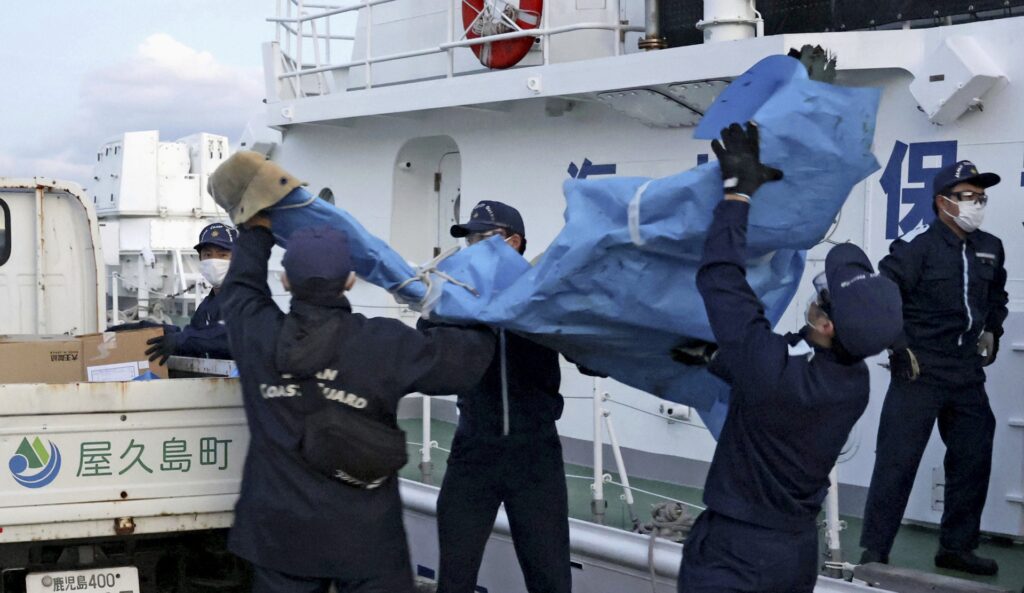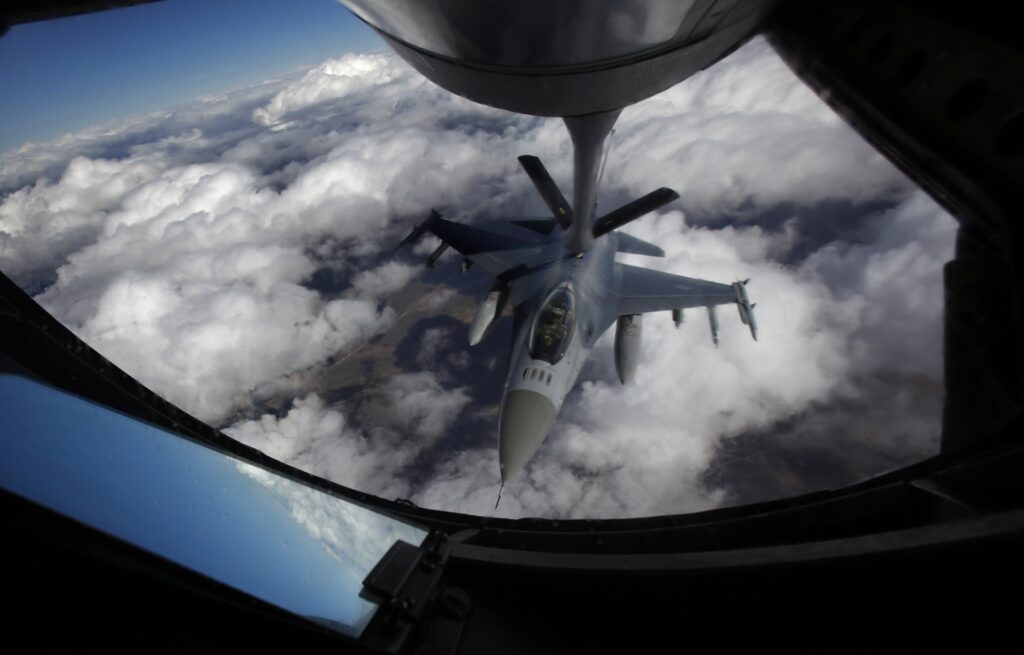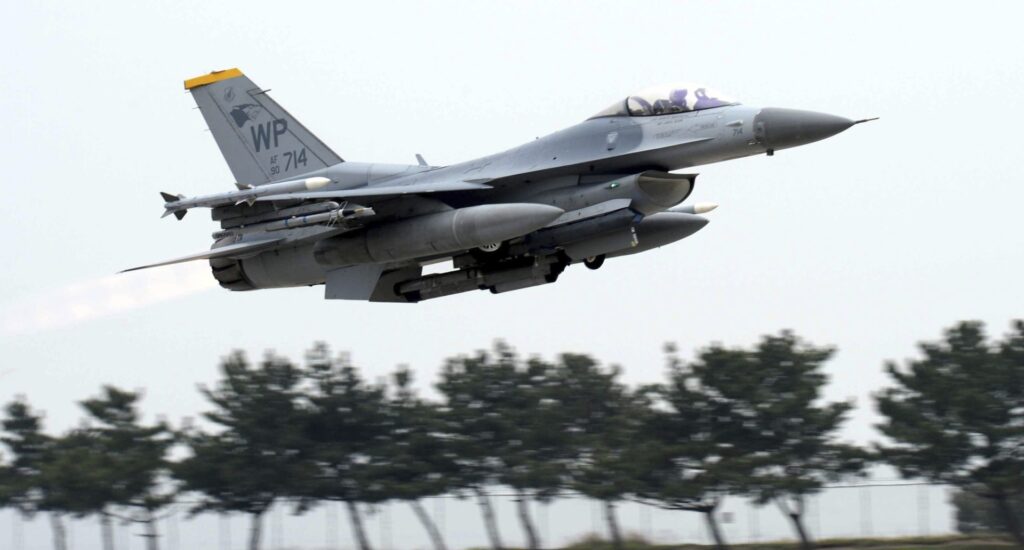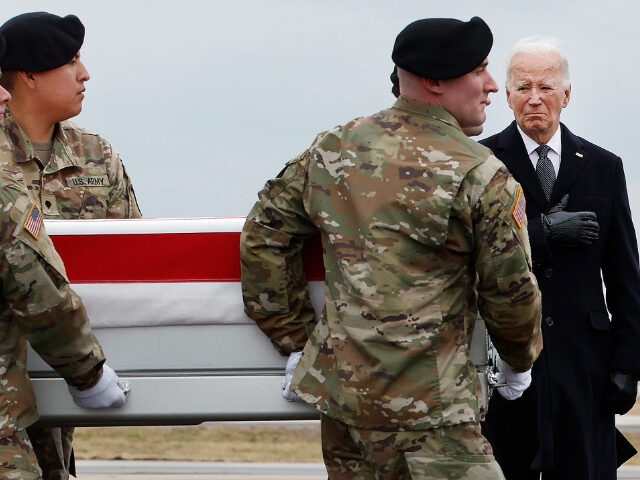At least three dozen service members have been killed in military aviation mishaps in one year — a concerning trend at a time of increasing U.S. tension with Russia, Iran, and China.
Also concerning is that a council at the Pentagon, created in 2022 and aimed at preventing military aviation mishaps, instead discussed motorcycle accidents at a July 2023 meeting.
Meanwhile, over the last 12 months, there have been at least 16 non-combat military aviation mishaps that have led to the deaths of at least 36 service members.
According to reports, these mishaps include:
- On February 6, five Marines were killed on a training mission when their CH-53E Super Stallion helicopter crashed in a mountainous area near San Diego during inclement weather.
- On January 4, an Air Force B-1B Lancer bomber crashed while trying to land at Ellsworth Air Force Base in South Dakota after a training mission, also during bad weather. The four-person crew safely ejected.
- On December 11, an Air Force F-16 fighter jet crashed into the Yellow Sea off South Korea when it experienced an “in-flight emergency” during a training mission. The pilot ejected.
- On November 29, eight airmen were killed when their Air Force CV-22B Osprey helicopter crashed off the coast of Yakushima Island during a training mission.

Members of the Japanese Coast Guard carry debris believed to be from the crashed U.S. military Osprey aircraft at a port in Yakushima, Kagoshima prefecture, southern Japan, on December 4, 2023. (Kyodo News via AP)
- On November 20, a U.S. Navy reconnaissance jet crashed into the water off of Oahu, Hawaii, after overshooting the runway at a Marine Corps base in low-visibility and high-wind conditions. There were no casualties.
- On November 10, five soldiers were killed when their Army MH-60 Black Hawk helicopter crashed into the Mediterranean Sea after experiencing an “in-flight emergency” during “routine flight training.”
- On September 25, an Air Force F-16 fighter jet was damaged during an “aviation incident” in California.
- On October 18, the belly of a Marine F/A-18C Hornet fighter jet lit into flames after experiencing a “landing gear anomaly” after landing at Marine Corps Air Station Miramar, California, after a training exercise. Emergency personnel responded to the scene.
- On August 27, at least three troops were killed, and at least five were injured when their Marine V-22 Osprey helicopter crashed on a north Australian island during a multinational training exercise.
- On August 25, a Marine was killed after his Marine F/A-18D Hornet crashed near Marine Corps Air Station Miramar in San Diego during a training exercise.
- On June 11, 22 U.S. troops were injured in a helicopter accident in northeastern Syria.
- On May 17, an Air Force F-15D Eagle fighter overran the runway at the Kingsley Field Air National Guard Base in Klamath Falls, Oregon, after conducting routine training. The pilot ejected.
- On April 27, three soldiers were killed, and one was injured after two Army AH-64 Apache helicopters crashed, returning from a training flight at Joint Base Elmendorf-Richardson in Anchorage, Alaska.
- On March 30, nine soldiers were killed when two Army Black Hawk medical evaluation helicopters crashed during a routine nighttime training exercise northeast of Fort Campbell, Kentucky.
- On February 15, 2023, two soldiers were killed when their Army MH-60 Black Hawk helicopter crashed during a training flight in Madison County, Tennessee.
- On February 5, 2023, two soldiers were injured when the Army AH-64D Apache helicopter crashed and rolled over when it was taking off from Talkeetna, Alaska. The Apache was headed to Joint Base Elmendorf-Richardson in Anchorage for training and had stopped in Talkeetna to refuel.
Recent data from Naval Safety Command also shows a significant spike in the rate of Class A flight mishaps per 100,000 flight hours for both the Navy and the Marine Corps between February 2023 and February 2024.
The problem is not new to the Pentagon, but it is unclear what it is doing about it.
After a spate of military aviation mishaps between 2013 and 2018, Congress established a commission known as the National Commission on Military Aviation Safety. In December 2020, the commission issued its final report, which made several recommendations, including for the Pentagon to create the Joint Safety Council (JSC).
The JSC was meant to “establish aviation safety responsibilities within the Office of the Secretary of Defense to ensure sufficient status, experienced and highly qualified personnel, and adequate funding to be effective in preventing injury, death, and damage,” according to the commission’s final report.
“Without empowered leadership focused on aviation safety at a high level within the department, aviation safety will never get the consistent emphasis and resourcing it needs to make saving lives and protecting investments in personnel and equipment a priority,” the commission said in its final report.
In August 2022, President Joe Biden’s Pentagon established the JSC. A Department of Defense (DOD) article acknowledged at the time:
The JSC originates from the National Commission on Military Aviation Safety recommendation to provide a dedicated focus on operational safety challenges, as well as augment existing safety programs by helping “bridge the gap between commercial aviation practices and military aviation realities.”
However, as noted above, the JSC, at a meeting in July, focused instead on motorcycle fatalities, calling them an issue “foremost” in the council members’ minds, according to a DOD article.
The Pentagon did not respond to questions about the JSC from Breitbart News by the deadline.
Venable: Disconcerting That Mishaps Happening During “Benign” Training
Jon Venable, a senior research fellow at the Heritage Foundation and a retired Air Force F-16 fighter pilot, in a recent interview, called the recent spike in mishaps “disconcerting.”
Venable said that in the 1980s, pilots trained hard in preparation for a war with the Soviet Union and flew aggressive tactics at low altitudes — 100 to 300 feet at 480 to 540 knots, which resulted in a high number of mishaps. “You don’t get many missteps. You actually have to be very good at that,” he said.
However, he said that beginning in the 2000s, pilots flew in very low-threat environments at medium altitudes. While the number of mishaps has dropped since the 80s, the training has become “benign.”

A U.S. Air Force F-16 refuels in mid-flight from a KC-135 Stratotanker during a Red Flag exercise over the Nevada Test and Training Range on February 10, 2014. (John Locher/Las Vegas Review-Journal via AP)
“It’s benign training. They’re flying at medium altitude; they’re not having to respond to threats,” he said. “And so, you come all the way to today. We’re still flying benign training. The military is flying medium altitude, very low threat tactics, by and large, almost across the board and training to that.”
He said that even when flying for high-threat tactics, pilots are still training at medium altitude. “They’re not training at low altitude,” he said.
“It is a spike, and the spike should be disconcerting because of the way we’re flying — because of the lack of high-intensity training scenarios and low-altitude structure. We’re doing it at medium altitude, and we’re still suffering a growing number of accidents,” he said.
“Many of the accidents and mishaps are going to and coming from airspace, or they are actually in the landing or takeoff phase,” he added.
Cause of “Spike” in Mishaps: Insufficient Flying Hours
Venable, who authored the Heritage Foundation’s recent 2024 Index of U.S. Military Strength section on the Air Force, believes the mishaps are due to pilots and aircrews not getting enough training time.
He said that as an Air Force F-16 fighter pilot who graduated from the Air Force Fighter Weapons School, or “Top Gun,” he flew four to six times a week. He added that now, pilots fly only one to two times a week. “We’re not giving people the basic training time that they need in order to actually propagate safe flying,” he said.
“When you get into the aircraft with so little currency, you look at all the switches in the jet, and you just say a little prayer, ‘Lord, please don’t let me mess up today.’ And that second-guessing is occurring across the services and across the board. And when you’re at that stage, things are not innate. Things are not natural,” he said. “That’s where we are right now across the services but particularly with regard to the Air Force.”

U.S. Air Force’s F-16 fighter takes off during an annual joint air exercise “Max Thunder” between South Korea and the U.S. at Kunsan Air Base in Gunsan, South Korea on April 20, 2017. (Go Bum-jun/Newsis via AP, File)
The Heritage Foundation’s analysis shows that flying hours have declined in recent years for at least two of the services.
Air Force aircraft in fiscal year 2013 flew 2.04 million hours — at a time of steep defense cuts — but in fiscal year 2022, they flew fewer than 1.12 million hours — a 82 percent decline.
Meanwhile, in the Army, Combat Aviation Brigades in fiscal year 2023 flew 10.6 active flying hours per crew per month, but there are only 9.2 flying hours per crew per month budgeted into the fiscal year 2024 request — a 13 percent decline.
According to a May 2023 Military.com article, Army helicopter pilots are flying “significantly less” than they were a decade ago:
Since 2012, flight hours across the Army’s top three helicopter platforms have dipped dramatically. Flight time with the Apache has dropped about 50%; Chinook pilots have 36% less time in the air; and the Black Hawk, the service’s premier workhorse, is flying 25% less.
The Army denied in that article that reduced flying hours were linked to more mishaps.
Venable said reduced flying hours also have an effect on maintenance, which could lead to mishaps.
“The more maintainers fix broken aircraft, the better they are at fixing broken aircraft. And so if you don’t give them a lot of hands-on training that comes with a lot of flying hours, a lot of sortie rates, then those folks get rusty too, and they’re very liable to miss fundamental things that will cause an aircraft to have issues when they’re airborne or even suffer a catastrophic loss where a single engineer plane loses its motor, and the guy glides in, or he has to eject,” he said.
“And so, that’s why it’s the more you fly, the better you get at everything. And that’s true for maintenance. It’s true for pilots, and right now, we’re flying at such a low rate that you can expect everybody to be rusty and mishap rates go up,” he added.
Venable: Leadership “Enamored” with Things “Not Involving Flying”
As far as what could fix the problem, Venable believes the problem is not funding but leadership prioritizing training and readiness. He said the Air Force’s budget was boosted under the Trump administration, but Air Force leaders decided to ramp up spending on Research Testing Development and Evaluation (RTD&E) instead of focusing on training and readiness.
“It’s gotten much worse under the Biden administration,” he said, adding, “The Air Force is basically more enamored with things that are not involving flying than they are with things that are involved in flying.”
“They continue to invest for something that will be here ten or 15 years down the line, but they don’t invest in procuring aircraft today, nor do they invest in procuring flying hours,” he said. “This year, the Air Force will fund fewer flying hours than it has in its history — that’s through the Carter administration, that’s through the lows of sequestration. It is significantly below even sequestration numbers.”
“And it is horrific what the service’s leadership is doing to the service,” he added.
Venable said the last two Air Force chiefs of staff — the now current Chairman of the Joint Chiefs of Staff Gen. Charles “C.Q.” Brown and retired Gen. Dave Goldfein — both brought with them a corporate mindset of “there’s something better out there.”
In addition, Venable said the Air Force is lowering flight school graduation standards. He noted that in the 1980s and 1990s, there was a 25 to 30 percent washout rate. Now, he said, there is a 0.25 percent washout rate.
“There is no screen for competency going through flight school,” he said. He said things like grade point averages and previous flying experience have been taken out of consideration and even work against those being screened for flight school.
“It actually works in the opposite direction. That means that you had an advantage, and you should have that advantage taken away from you in the consideration process,” he said.
Meanwhile, members of Congress have demanded answers. After a string of Army helicopter crashes in spring 2023, in May, Sen. Kirsten Gillibrand (D-NY) requested Defense Secretary Lloyd Austin review all rotary-wing aviation accidents that resulted in a loss of life and/or the loss of aircraft.

Sen. Kirsten Gillibrand (AP Photo/Jacquelyn Martin, File)
After the accident that killed eight airmen off the coast of Japan in November, House Oversight Committee Chairman James Comer (R-KY) requested that Austin turn over documents on the Osprey program, including safety records and maintenance logs.
In December, Reps. Mike Waltz (R-FL) and John Garamendi (D-CA) requested the Government Accountability Office investigate the cause of accidents involving the Osprey, which the GAO reportedly agreed to.

U.S. Defense Secretary Lloyd Austin (Kevin Dietsch/Getty Images)
But Venable warned that changes needed to happen sooner than later.
“If I was China, I would attack on October 31 of this coming year. And the reason why I would do that is not because the next president — whoever he is — can or will try to turn it around and fix it,” he said.
“It will be because we are at such a low state of readiness that we will not be able to thwart the attack on Taiwan or anyplace else that they want to go.”
Follow Breitbart News’s Kristina Wong on “X,” Truth Social, or on Facebook.

COMMENTS
Please let us know if you're having issues with commenting.